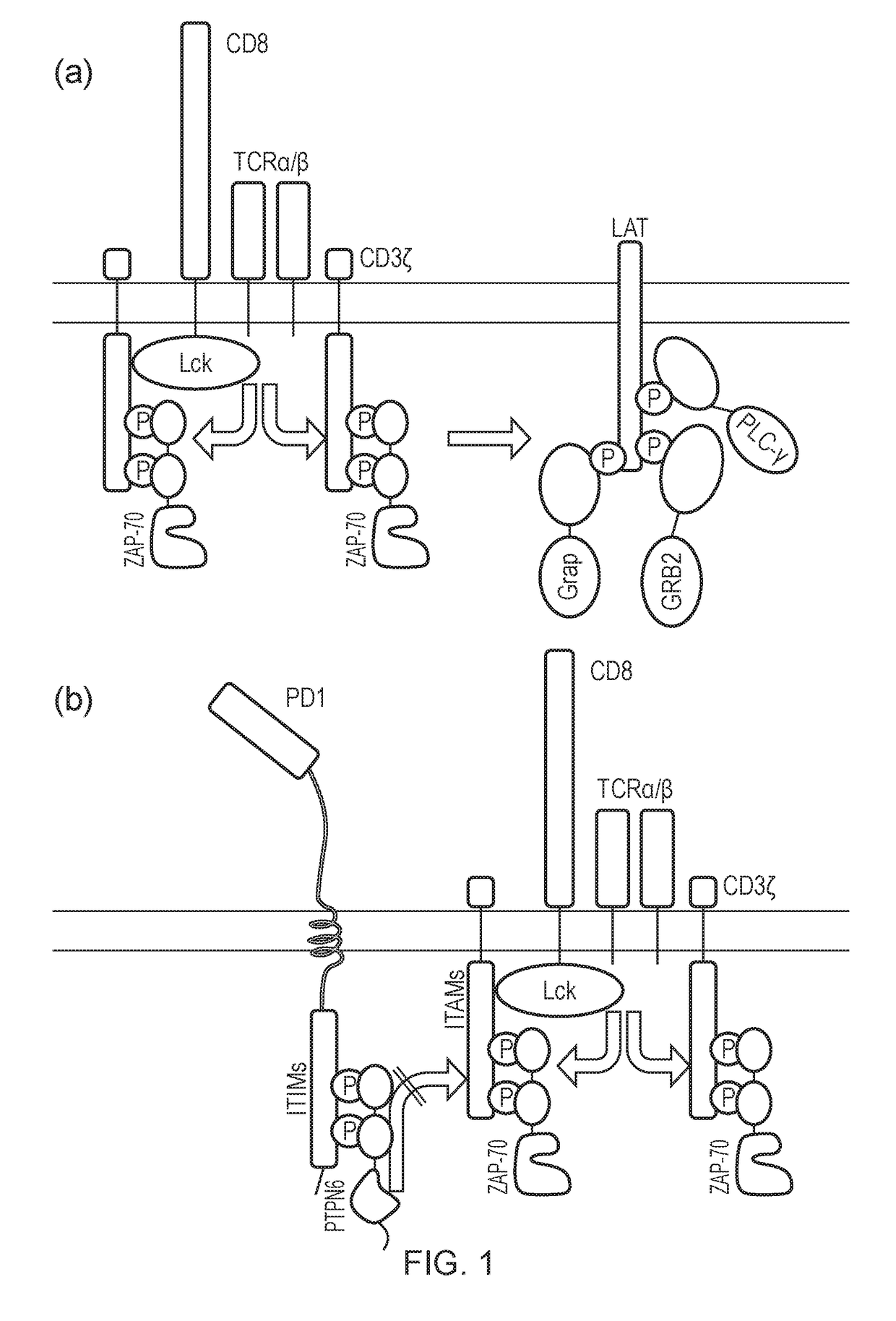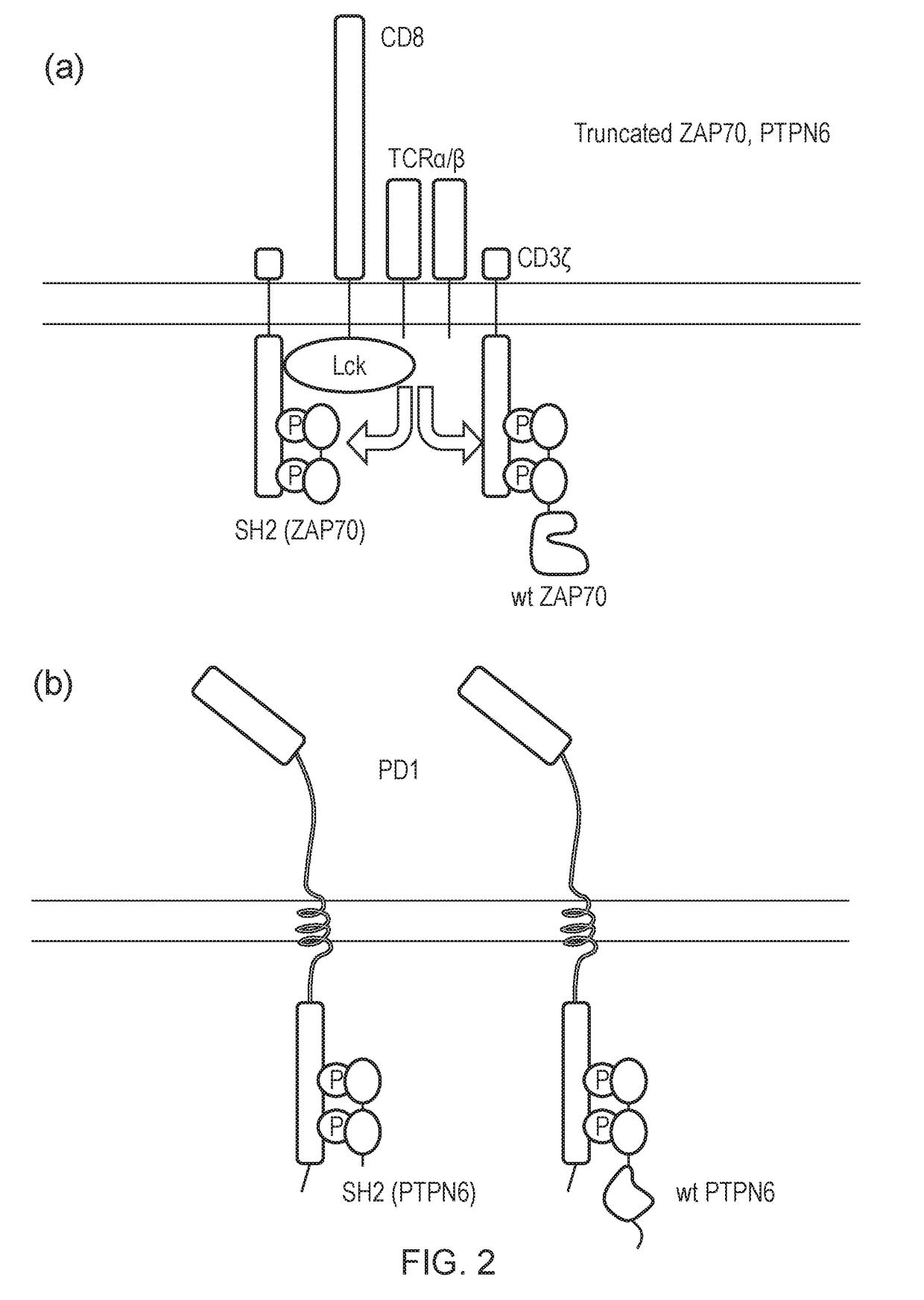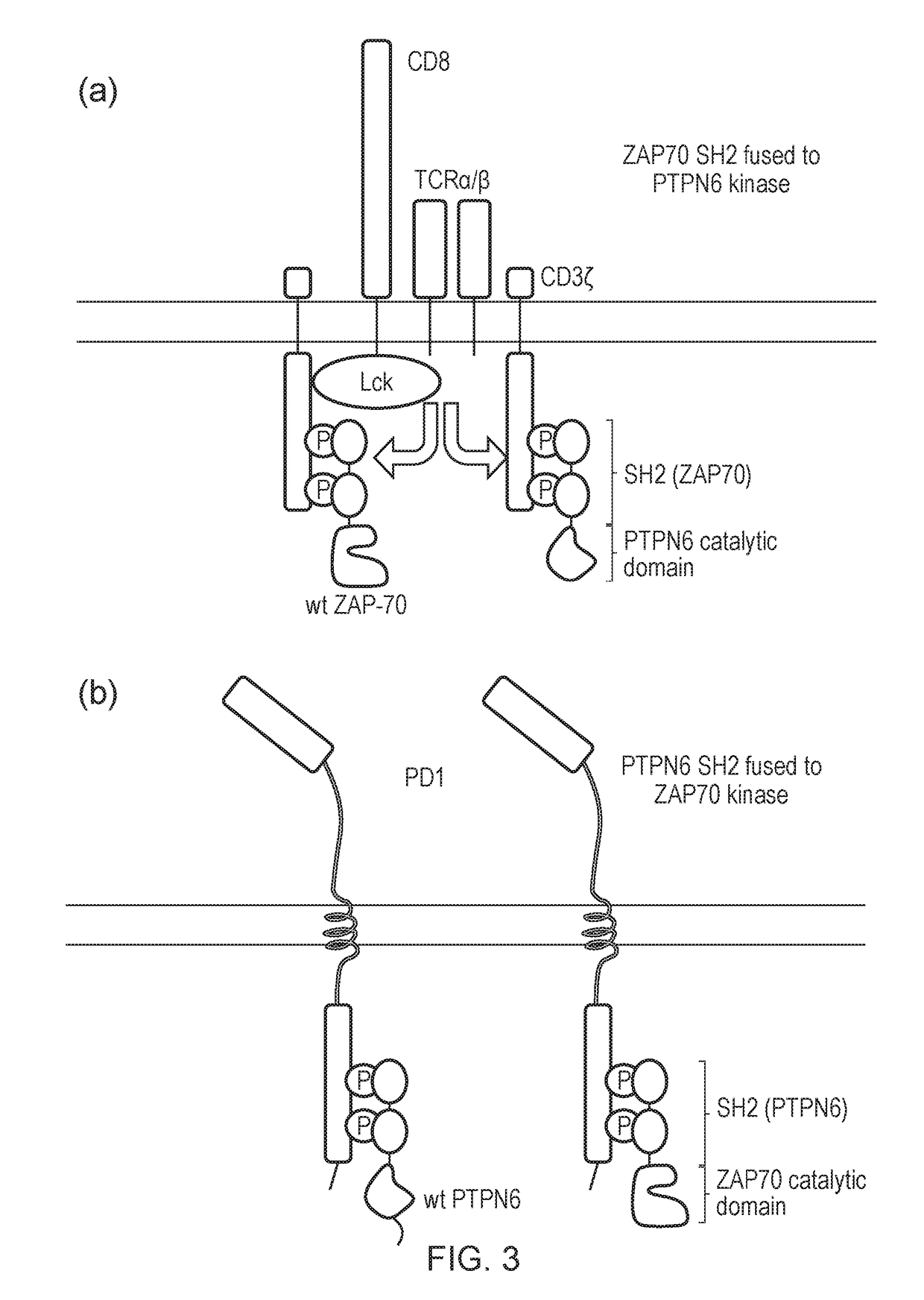Cell
a fusion protein and protein technology, applied in the field of cells, can solve the problems of limited persistence and expansion of t-cells adoptively transferred in vivo, on-target off-tumour effects, and limitations of the approaches detailed above, and achieve the effect of treating and/or preventing a diseas
- Summary
- Abstract
- Description
- Claims
- Application Information
AI Technical Summary
Benefits of technology
Problems solved by technology
Method used
Image
Examples
example 1
on of the T Cell Activation Pathway to Augmented or Non-Physiological Signals
[0472]A number of SH2 domains involved in early T cell signal activation were tested to determine whether T cell activation signals could be subjugated or “hijacked”, such that when a T cell was activated the signal could be modulated or re-transmitted.
[0473]The inventors generated several chimeric AKT constructs by linking the kinase domain of AKT to SH2 domains from Zap70, Grap, Grb2 and PLCy (FIG. 8).
[0474]In non-transduced (NT) T cells, very low levels of phosphorylation of the endogenous AKT were detectable following treatment with OKT3 to induce cross-linking and activation of the TCR (FIG. 10b:top panel). However, in cells expression the Zap-AKT construct, significant levels of phospho-AKT were observed (FIG. 10b:bottom panel).
[0475]Linker for activation of T cell (LAT) is a downstream target of ZAP70 and is bound by several SH2-containing proteins, such as Grb2, Grap and PLCy. It was anticipated tha...
example 2
tional Control
[0478]The TeV protease was fused to the Zap70 SH2 domain. A membrane-bound transcription factor was also generated as follows: RQR8 was cloned in frame with the VP16 / GAL4 transcription factor separated by a TeV cleavage site. This fusion protein allows release of the VP16 / GAL4 transcription factor (which contains a nuclear localizing signal) upon TeV cleavage.
[0479]These proteins were both expressed in a T-cell which also expressed a CD19-specific chimeric antigen receptor. To demonstrate that the ZAP70-TeV approach is needed, the transcription factor was co-expressed with a CD19 CAR whose endodomain was replaced by TeV (FIG. 11).
[0480]T-cells were exposed to CD19 negative and positive targets. Transcriptional activation was measured by a Luciferase cassette responsive to GALv / VP16. Only the condition where a standard CD19 CAR was co-expressed with ZAP-TeV and the membrane tethered transcription factor resulted in selective transcriptional activation upon CD19 recognit...
example 3
al Blockade Using Truncated SHP-1 (PTPN6) or Truncated SHP-2
[0481]PBMC cells were transduced as shown in the following table:
Name onFIG. 15 keyDescriptionConstruct(s)NTUntransduced—FMC63Transduced with CD19 CAR onlySFG.aCD19_fmc63-HCH2CH3w-CD28tmZwPD1Transduced with PD1 onlypDual-PD1-GFPFMC63 + PD1Co-transduced with CD19CARSFG.aCD19_fmc63-HCH2CH3w-and PD1CD28tmZw and pDual-PD1-GFPFMC63 −Co-transduced with a) bicistronicSFG.aCD19_fmc63-HCH2CH3w-SHP1 + PD1construct encoding CD19CARCD28tm-Zeta_w-2A-dualSH2_SHP-1and truncated SHP1, and b) PD1and pDual-PD1-GFPFMC63 −Co-transduced with a) bicistronicSFG.aCD19_fmc63-HCH2CH3w-SHP2 + PD1construct encoding CD19CARCD28tm-Zeta_w-2A-dualSH2_SHP-2and truncated SHP1, and b) PD1and pDual-PD1-GFP
[0482]The cells were co-cultured for 48 hours with SupT1 cells transduced with CD19, PDL1 or both and IFNγ release measured by ELISA. The results are shown in FIG. 15.
[0483]The presence of PDL1 on SupT1 target cells caused a reduction in IFNγ release. There ...
PUM
| Property | Measurement | Unit |
|---|---|---|
| nucleic acid | aaaaa | aaaaa |
| tumour reactivity | aaaaa | aaaaa |
| immune resistance | aaaaa | aaaaa |
Abstract
Description
Claims
Application Information
 Login to View More
Login to View More - R&D
- Intellectual Property
- Life Sciences
- Materials
- Tech Scout
- Unparalleled Data Quality
- Higher Quality Content
- 60% Fewer Hallucinations
Browse by: Latest US Patents, China's latest patents, Technical Efficacy Thesaurus, Application Domain, Technology Topic, Popular Technical Reports.
© 2025 PatSnap. All rights reserved.Legal|Privacy policy|Modern Slavery Act Transparency Statement|Sitemap|About US| Contact US: help@patsnap.com



